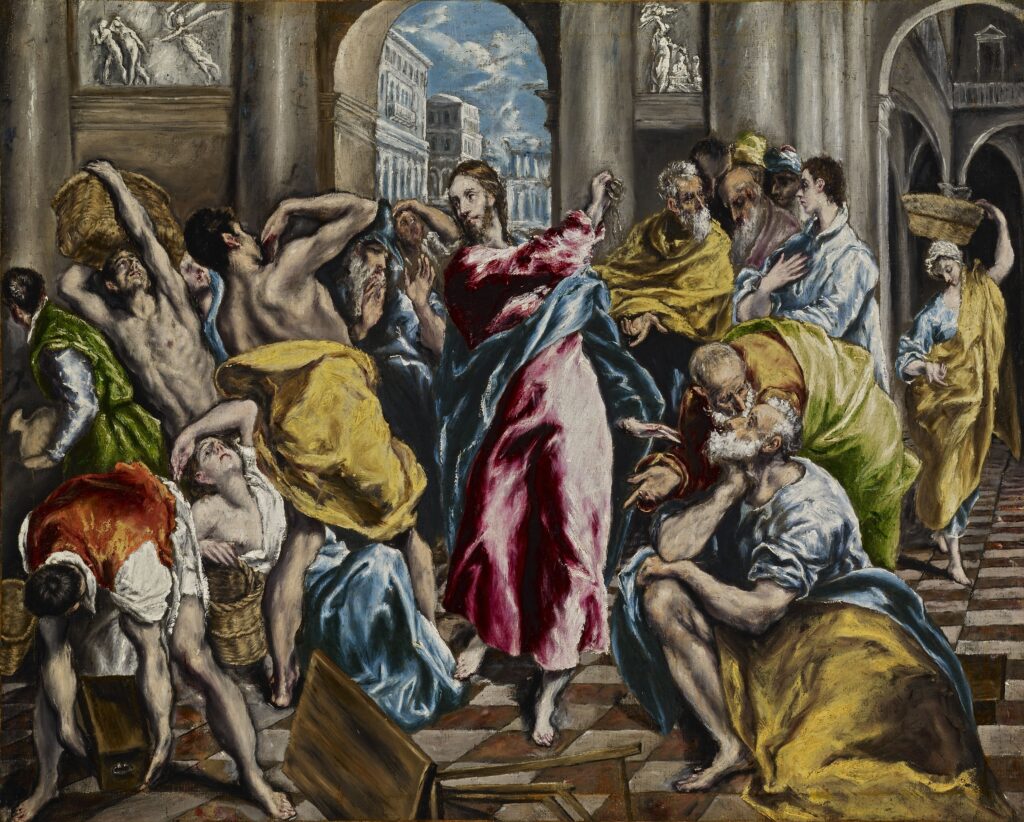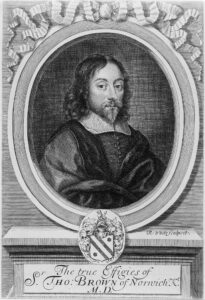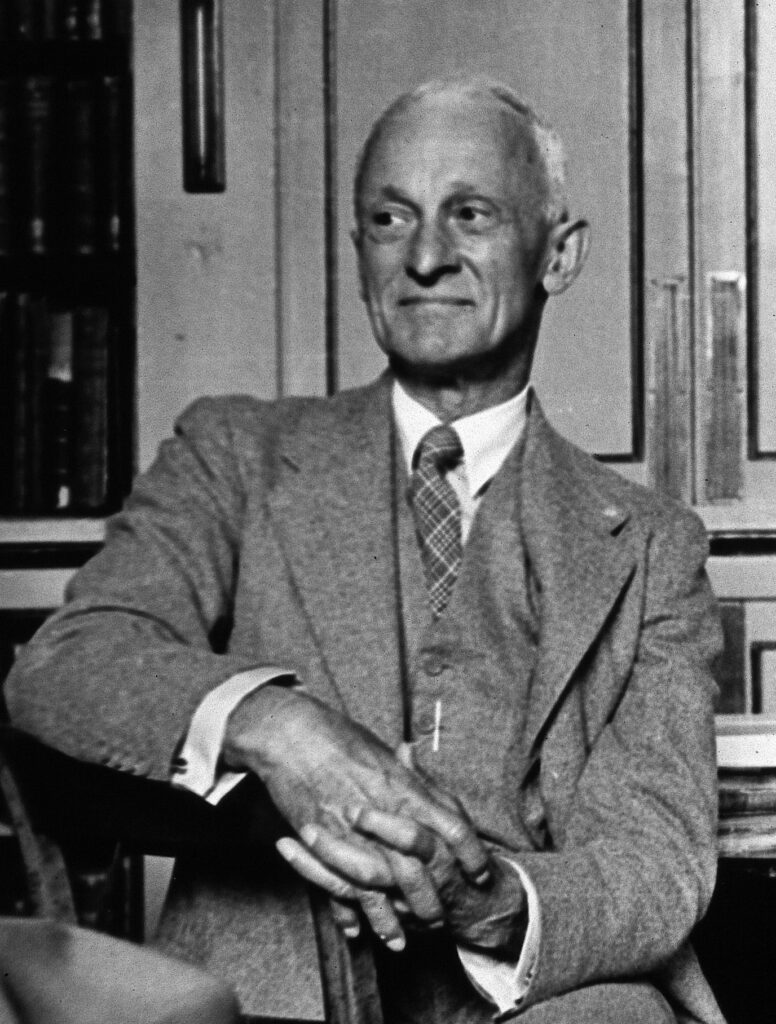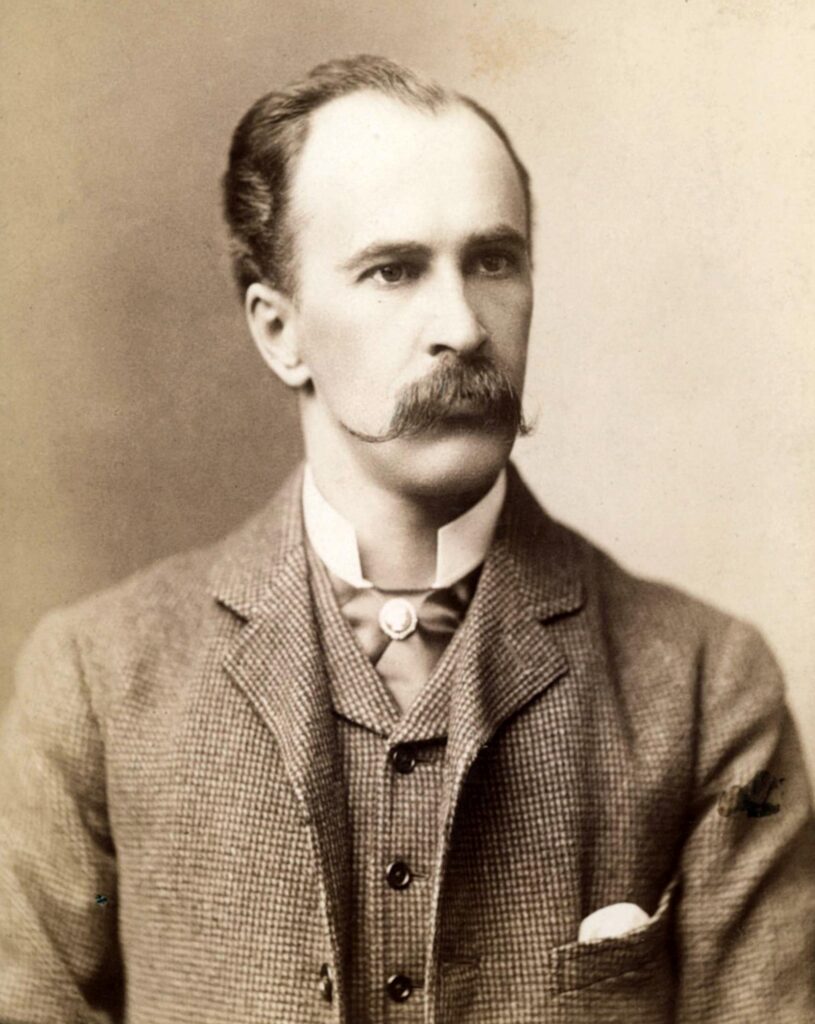Robert Schell
Brooklyn, New York
 |
| Biblical inspiration: Christ Driving the Money-Changers from the Temple (or The Purification of the Temple). El Greco, c. 1600, Frick Collection. Via Wikimedia. Public domain. |
In these days of rampant biomedical commercialization, the Bible-inspired admonition “No one should approach the temple of science with the soul of a money-changer” takes on added urgency. The quotation’s usual attribution to Sir Thomas Browne, the seventeenth-century English physician-writer, gives the words added moral and philosophical heft.1 While most authors and compilers do not cite a specific text, a few place the quotation in Religio Medici.2 However, a thorough text search of various editions of all Browne’s works stored online,3 as well as an old-fashioned hardcover read-through of Religio Medici,4 reveals no trace of the saying.
So, if Browne did not write the temple quote, how did he get the credit? More important, who should have it instead?
Harvey Cushing created the confusion in 1925 when he included in his biography of William Osler the following summary of Osler’s March 31, 1875 McGill valedictory address:
He [Osler] points out that behavior is more certain to bring success than a “string of diplomas”; quotes Sir Thomas Browne to the effect that “No one should approach the temple of science with the soul of a money-changer”; touches on their obligations to the poor, on the question of livelihood, on the relationship between doctors, and ends with an appeal for sobriety, more needed happily by students of those days than of the present.5
But Osler did not explicitly attribute the quote to Browne. Rather, he told the students:
You have of course entered the Profession of Medicine with a view of obtaining a livelihood; but in dealing with your patients let this always be a secondary consideration. It has been well said, “No one should enter the temple of science with the soul of a money-changer.” Let the spirit of your Medical moralist, Sir Thomas Browne, whose Religio Medici I would recommend to your perusal, actuate you. He says, “Let me be sick myself, if sometimes the malady of my patient be not a disease unto me; I desire rather to cure his infirmities than my own necessities.”6
 |
| Portrait of Sir Thomas Browne. Engraving by Robert White. Wellcome Collection via Wikimedia. CC BY 4.0. |
Prefacing the temple quote with “It has been well said” not only sets it apart from the words of Browne, but it implies anonymity. That anonymity is consistent with Osler’s apparent source, an unsigned “Address to Students” published four years earlier in the Lancet that reads:
But all depends upon the spirit with which he [the medical student] enters upon it [science] . . . He who qualifies himself for the practice of his profession rather as a means of self-advancement than of philanthropic service; who has one thought for his client and two for himself; who approaches the temple of science with the soul of a money-changer, may be warned off the threshold at once, and bidden to betake himself elsewhere.7
While some might note that Osler’s religious background could have prompted him to compose the temple quote on his own, other phrasing similarities between the two addresses—reflections on how medicine is a “progressive science” and how patients judge their physician’s competence—leave no doubt that he was inspired by the Lancet text.
One can only speculate as to the Lancet source. As more and more texts are digitized, perhaps a complete antecedent will surface. Alternatively, it is possible the Lancet author composed his version of the temple quote de novo. But any assertion of originality must be tempered by the fact that the underlying sentiment—the desecration of the sacred by lucre—had, after nearly two millennia, escaped its original religious significance, become attached to secular activities, and provoked broad public discussion.
For example, in 1853, Benjamin Pierce addressed the American Association for the Advancement of Science as follows: “Gentlemen, we have come to study our duty as scientific men . . . It is not to be forgotten that the Temple of Science, by whomsoever built, belongs to no country or clime . . . Let us stand here reverently . . . Let us not raise the money-changer’s cry of mine and thine.”8 In Berthold Auerbach’s 1866 short story “The Nose Ring,” a character asks, “How can I enter into the stillness of the temple of science when I carry in me a money-changer and money maker?”9 And in his 1870 address to the graduating class of Columbia Law College, U.S. Senator Matthew H. Carpenter said, “Money-changers have no place in the temple of justice.”10 In effect, the temple quote expressed a sentiment of general concern about the corrupting influence of money: it was a commonplace, a proverb waiting to happen.
 |
| Crop of Harvey Williams Cushing from photo with Sir Charles Scott Sherrington. 1938. Wellcome Collection via Wikimedia. CC BY 4.0. |
And one can only guess how Cushing made this error. In the rush to summarize vast tracts of Osleriana, could he have gotten a little careless? Perhaps some hastily taken notes about the valedictory address listed two quotations bracketing Browne’s name, or maybe he interpreted the two quotation-marked statements as a single interrupted passage. Superficially, the religious allusion in the temple quote would seem Browneian. Considering Cushing’s respect for Osler’s literary prowess and his awareness of Osler’s reverence for Browne, Cushing would see no need to independently source each quote.
Nearly a hundred years have gone by since Cushing’s mistake. Should we be surprised the error persists? Not really. Like Cushing, many readers would feel comfortable with, some even thrilled by, the Browne label. Few readers would be familiar enough with Browne to realize the temple quote’s style and diction clashed with Browne’s, or would know that the term “temple of science” only started to circulate decades after Browne’s death. It is possible, even likely, that some early transmitters of the temple quote had suspicions about the attribution. But their journeys to verification would inevitably bring them to the previously quoted passage from Cushing, and even if they pushed on to the valedictory itself, they would still be facing the gigantic task of reading all of Thomas Browne to prove, in effect, that Harvey Cushing—father of neurosurgery, Harvard and Yale professor, bestselling Pulitzer Prize winner, and Osler heir and authority—had goofed. That is a lot of effort against very long odds for the sake of a relatively small textual point, so why bother? Call this deference the other Cushing Effect.
Going forward, to whom should quotation collectors attribute the temple quote? Since the precise wording comes from Osler, he would be the logical candidate, but in his McGill address he clearly does not want to be known as taking credit, thus leaving us to ascribe the quote either to the Lancet (the source for much of the wording) or, viewing it as a commonplace, to label it Anonymous or a Canadian-English proverb.
And if we accept Francis Darwin’s assertion that “in science credit goes to the man who convinces the world, not to the man to whom the idea first comes,”11 we might even offer the label to Harvey Cushing. After all, he chose to include it in his publication, and it was that immensely successful book that rescued the quotation from a fifty-year-old journal and brought it to the attention of the world.
 |
| William Osler. Photo by Gilbert & Bacon, 1880. Via Wikimedia. Public domain. |
Finally, one could try to please everyone (and therefore no one) by assigning multiple authorship, treating the quotation as a scientific law or medical syndrome, and calling it, perhaps, the Lancet-Osler-Cushing Dictum.
But multi-authorship, for all its pretense of fairness and precision, would, like the labels “Anonymous,” “Proverb,” or “Lancet Address,” not only depersonalize the quote, but deprive it of a connection to a single major figure, and there can be no doubt that the mistaken attribution to Sir Thomas Browne has contributed to the quote’s popularity and availability. At this point in the saga of the temple quote, the issue of attribution merges with that of preserving the quotation’s status and accessibility. So, despite his demurral, I would award the authorship prize to Osler alone: not only did he recognize the importance of the Lancet passage and vastly improve its quotability, but his name affords the necessary humanity and gravitas and, in these profit-driven times, would grant wide, easy, and long-term access in lists of Oslerian wisdom.
It is not surprising that proper attribution has waited until the internet age, a time when passing curiosities are easily indulged with fast and powerful text-scanning tools. The internet giveth (to Osler); the internet taketh away (from Browne).
But even if stripped of the fame of the temple quote (fame he would not have been impressed by), Sir Thomas, in spirit, still presides over this quest for correct attribution, in particular the spirit of his great Pseudotoxia Epidemica, a work which eerily prefigures our current dedication to evidence-based medicine. Subtitled “Enquires into Very many Received Tenents, And commonly Presumed Truths,” Pseudodoxia Epidemica seeks to debunk popular misconceptions—so-called vulgar errors—and explain how they occur as a result of various factors like gullibility, bias, or, as in this case, deference to authority. By removing Browne’s name from the temple quote we are doing what Browne himself would do: examine the evidence and then rid the world of one more vulgar error.
References
- Strauss, Maurice, ed. Familiar Medical Quotations. Boston: Little, Brown, 1968; Gaither, Carl, and Cavazos-Gaither Alma, eds. Medically Speaking: A Dictionary of Quotations on Dentistry, Medicine and Nursing. Bristol: Institute of Physics, 1999; McDonald, Peter, ed. Oxford Dictionary of Medical Quotations. New York: Oxford University Press, 2004.
- Bixler, Julius. “Physicians as metaphysicians.” Connecticut State Medical Journal10 (1946): 576; Washington, Harriet, Deadly Monopolies. New York: Doubleday, 2011.
- Browne’s works accessed via Eason, James, “Sir Thomas Browne,” University of Chicago, http://penelope.uchicago.edu; and Jokinen, Anniina, “Sir Thomas Browne (1605~1682),” Luminarium, http://luminarium.org/sevenlit/browne/index.html.
- Browne, Thomas. The Prose of Sir Thomas Browne. New York: NYU Press, 1968.
- Cushing, Harvey. The life of Sir William Osler. Vol. 1. London: Oxford University Press, 1940: 129.
- Osler, William. “Valedictory address to the graduates in medicine and surgery, McGill University.” Canada Medical and Surgical Journal 3 (1875): 433-42.
- “Address to Students.” Lancet 2 (1871): 351-53.
- Pierce, Benjamin. “Opening Address.” Proceedings of the American Association for the Advancement of Science, Seventh Meeting, 1853. Cambridge: Joseph Lovering, 1856.
- Auerbach, Berthold. The “Good Hour”: or Evening Holiday. London: George Routledge and Sons, 1976.
- Carpenter, Matthew. “Address of Hon. Matt H. Carpenter.” Albany Law Journal 2 (1870): 121-26.
- Darwin, Francis. “Francis Galton.” The Eugenics Review 6, no. 1 (1914): 1.
ROBERT SCHELL, MD, is a retired neurologist (formerly chief, neurology service, Brooklyn Veterans Hospital, Brooklyn, New York).
Winter 2023 | Sections | Literary Essays

Leave a Reply